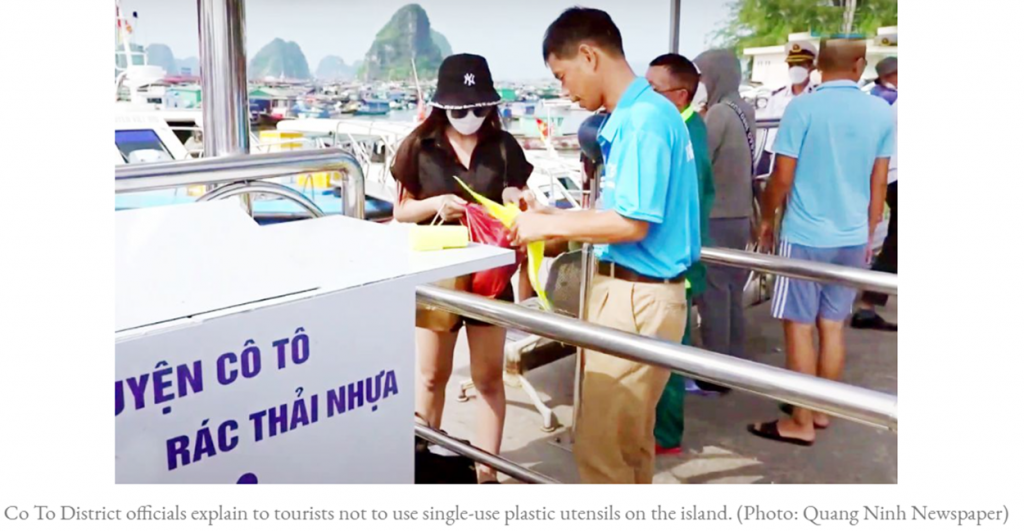This blog post addresses the communication of sustainable tourism in the destination Ha Long Bay, a stunningly beautiful coastal landscape in Vietnam.
Ha Long Bay in Quang Ninh province, Vietnam was recognized by UNESCO as a World Natural Heritage in 1994 and 2000. The natural scenery here is majestic and unique with hundreds of thousands of large and small islands and different shapes, clear sea water and natural beauty likes a painting.
This city government sets a goal of sustainable tourism development associated with environmental protection by 2025. And the government implements the commitments as follows:
Issue Green sail eco – label to cruise ships. It is a brand attached to cruise ships that meets standards of environmental protection and social responsibility, included: sustainable operation on environment, preventing and minimizing noise pollution, air pollution, waste minimization, wastewater and biodiversity protection. Only ships issued with the Green Sail eco – label are allowed to operate in the Bay.

Discharging waste directly into the bay is strictly prohibited and environmentally friendly practices such as using glass water bottles, paper straws and cups have been applied during the operation of cruise ships in the bay to minimize harm to the environment.
Apply advanced technologies, such as water-oil separation technique, to pre-treat wastewater before discharging into the environment.
Businesses and individuals providing cruise ships, kayaks, rowing boats and aquaculture businesses have committed to the Ha Long Bay Management Board not to use single-use plastic products in their operations on the Bay. With appropriate collection points set up at various attractions across the Bay, the destination has achieved an impressive 90% reduction in single-use plastic waste.

Persistent efforts in environmental protection in Ha Long Bay have brought encouraging results. Whales, which can only live in clean water, have appeared in this Bay. The coral reefs are well developed and cover a large area. The water quality in the Bay’s environment is within the allowable level according to Vietnamese standards. In addition, wastewater from cruise ships, tourist attractions, and coastal residential areas has also been treated.
Conclusion
Developing tourism in a sustainable way is not a simple task, it is associated with many responsibilities of relevant parties. And communicating of sustainable tourism destinations is completely correct and in line with current trends, when the globe is affected by climate change. Ha Long Bay has chosen the direction of sustainable tourism communication and has fully implemented its commitments on environmental protection, this place promises to be an attractive tourist destination for global tourists.
References
https://www.vietnam.vn/en/quang-ninh-phe-duyet-de-an-phat-trien-ben-vung-nganh-du-lich-den-nam-2025/
https://special.nhandan.vn/quang-ninh-strives-to-develop-green-tourism_es/index.html#:~:text=On%20September%201%2C%202022%2C%20the,environmental%20pollution%20to%20the%20island.
https://en.vietnamplus.vn/environmental-protection-efforts-augmented-in-ha-long-bay/271717.vnp